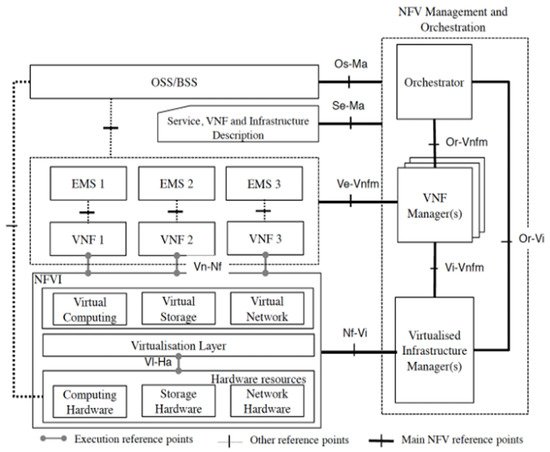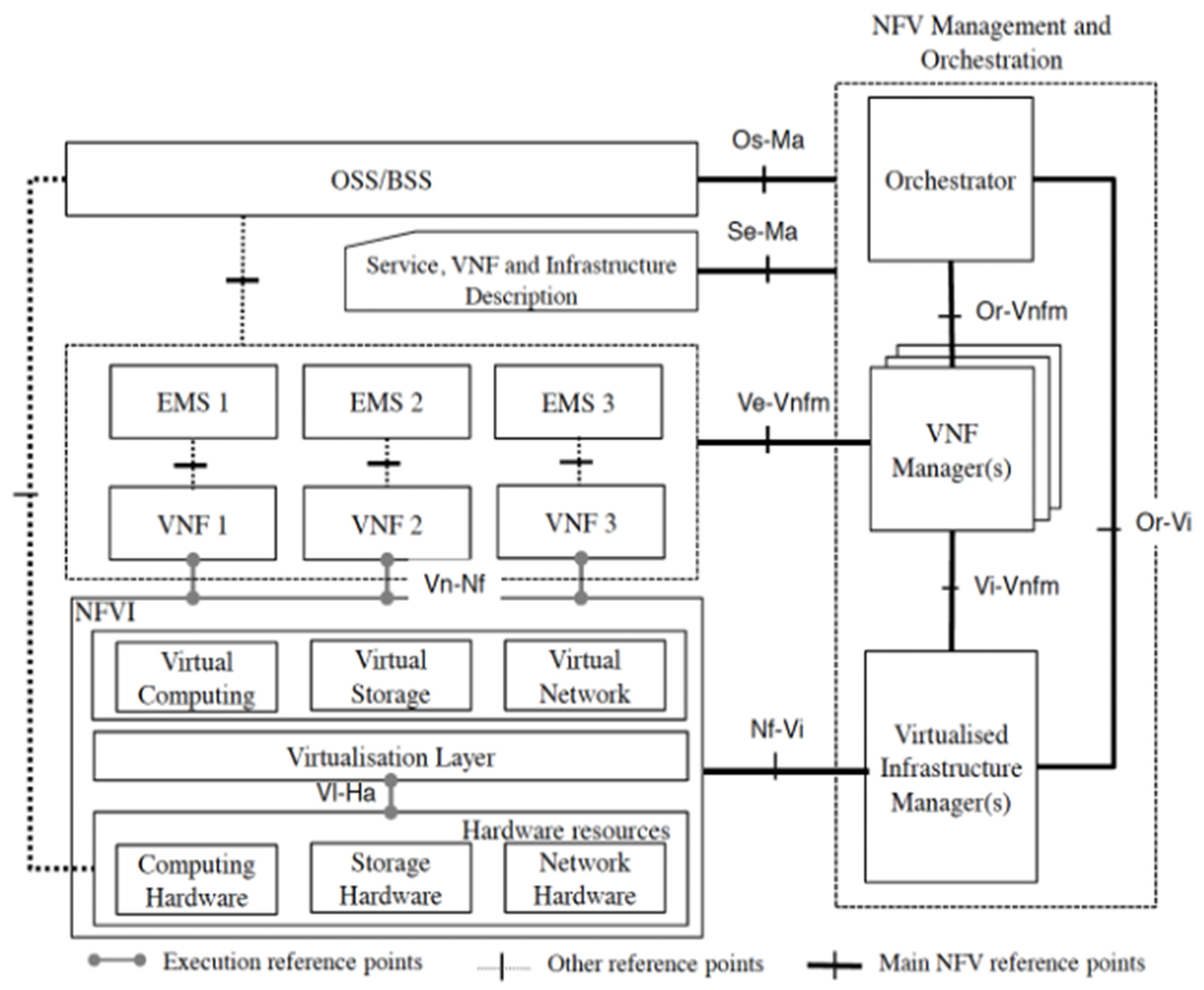Your browser does not fully support modern features. Please upgrade for a smoother experience.
Please note this is a comparison between Version 1 by Abdulrahman K. Alnaim and Version 2 by Camila Xu.
Network Function Virtualization (NFV) is a virtual network model, the goal of which is a cost-efficient transition of the hardware infrastructure into a flexible and reliable software platform.
- network function virtualization (NFV)
- cloud computing
- virtualization
1. Introduction
Network service providers need to deploy network equipment such as firewalls, domain name servers (DNSs), load balancers, routers, and switches at the consumers’ premises to deliver a network service. These network hardware devices may connect many computers with different operating systems and protocols, which increases the complexity of network infrastructure [1][2][1,2]. In addition, TSPs may require deploying additional network equipment to cover the consumers’ needs [3], which expands the network infrastructure and increases the operational expenditure (OpEx) and the capital expenditures (CapEx), making managing the network infrastructure a cumbersome process [4]. The heterogeneity of these pieces of equipment also makes it difficult to have a secure network environment.
A different paradigm has emerged in the network industry that developed the network infrastructure and its service delivery. Network Function Virtualization (NFV) takes advantage of virtualization to deliver virtual network functions, i.e., virtual firewalls, virtual switches, etc. It promises independence in hardware and software development, because they are not integrated with each other, and reduces the OpEx, the CapEx, and even the total cost of ownership (TCO) [5][6][5,6]. NFV also ensures a sharable and scalable network environment in which many NFV consumers can share and scale the network resources provided by TSPs according to their requirements. RWesearchers consider here TSPs as NFV providers.
Although NFV promises many benefits, as mentioned previously, it leads to security issues [7][8][7,8]. NFV providers are required to undertake substantial efforts to ensure a secure NFV service environment. To provide a secure NFV service, reswearchers need to study and understand the possible threats. In [9], rwesearchers looked at the main security threats in NFV and the possible countermeasures to these threats. In this research, researcherssurvey, we classified the vulnerabilities and mapped them to their possible threats. Here, researcherswe use misuse patterns to describe one of these threats, the threat of maliciously modifying non-control data. Misuse patterns are used to describe how an attack is carried out from the point of view of the attacker [10]. They also define the environment in which the attack can be carried out, the possible countermeasures to mitigate it, and the forensic information that could be used to trace the attack once it happens [10]. The patterns are part of an ongoing catalog that can be used by system designers to consider security aspects when building an NFV system.
The threat of modifying non-control data has been studied in various systems. In [11], the researcheuthors demonstrated real-world applications vulnerable to such attacks to show how non-control data attacks are realistic. In [12], the researcheuthors described some possible cases of kernel non-control data attacks. In [13], a data-oriented programming technique was used to construct non-control data attacks on nine applications. The researcheuthors also used a dataflow stitching technique to generate data-oriented exploits that led to non-control data attacks. Another scenario of a non-control data attack is explained in [14], in which a memory corruption vulnerability was leveraged. Although many researchers have explained the possibility of this threat, no one in the literature has used patterns to analyze the threat of non-control data in an NFV system. Patterns have proved convenient to describe the threats in several environments, such as cloud [15], IoT [16], and VoIP [17].
2. Background
2.1. Network Function Virtualization
NFV transforms the traditional network architecture from a static architecture that comprises physical hardware to an agile one that provides network functions as software running in virtual machines (VMs). Decoupling the network functions from its dedicated hardware and emulating them to virtual servers will result in the following benefits [18][19]:-
Flexibility: The network will be provided as a software service, ensuring flexible and faster deployment;
-
Elasticity: NFV consumers will be able to dynamically scale the network resources;
-
Extensibility: It would be possible to dynamically add more network services within the network service;
-
Faster deployment: The network service will be configured faster.


